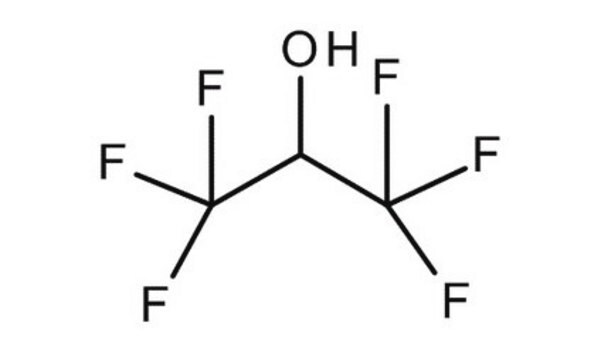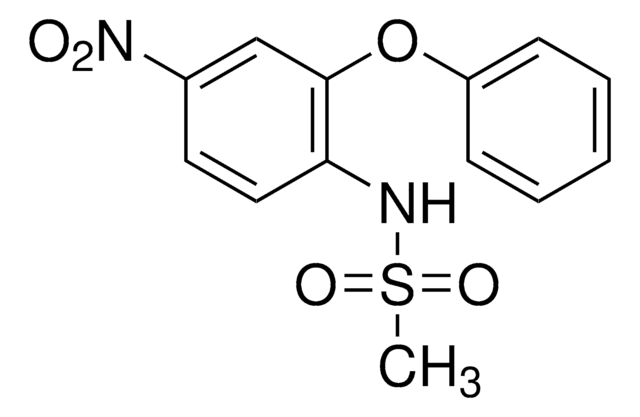34998-M
Acetonitrile
≥99.9%, HPLC Plus, suitable for HPLC
Sinonimo/i:
ACN, Cianometano, Cianuro di metile, Etilnitrile
About This Item
Prodotti consigliati
Nome del prodotto
Acetonitrile, HPLC Plus, ≥99.9%
Grado
HPLC Plus
Densità del vapore
1.41 (vs air)
Tensione di vapore
72.8 mmHg ( 20 °C)
Saggio
≥99.9%
Stato
liquid
Temp. autoaccensione
973 °F
Limite di esplosione
16 %
baseline drift measuring range
≤12 mAU (210 nm)
tecniche
HPLC: suitable
Impurezze
≤0.0001% free alkali (as NH3)
≤0.0002% non-volatile matter
≤0.001% free acid (as CH3COOH)
≤0.01% water (Karl Fischer)
≤0.5 ppb fluorescence (quinine) at 254 nm
≤0.5 ppb fluorescence (quinine) at 365 nm
Residuo alogenato
10 ng/L (as heptachlor epoxide)
Indice di rifrazione
n20/D 1.344 (lit.)
P. ebollizione
81-82 °C (lit.)
Punto di fusione
−45 °C (lit.)
Densità
0.786 g/mL at 25 °C (lit.)
Gradiente HPLC
≤0.2 mAU at 254 nm
≤1 mAU at 210 nm
λ
H2O reference
Assorbanza UV
λ: 195 nm Amax: ≤0.10
λ: 200 nm Amax: ≤0.02
λ: 228 nm Amax: ≤0.005
λ: 235 nm Amax: ≤0.0044
λ: 250 nm Amax: ≤0.0044
λ: 400 nm Amax: ≤0.0044
Formato
neat
Stringa SMILE
CC#N
InChI
1S/C2H3N/c1-2-3/h1H3
WEVYAHXRMPXWCK-UHFFFAOYSA-N
Cerchi prodotti simili? Visita Guida al confronto tra prodotti
Descrizione generale
Applicazioni
Mass spectrometry, HPLC, TLC, GPC, UV, IR, GC, Pesticide Residue Analysis, and RNA/DNA Synthesis and Purification.
Confezionamento
Nota sulla preparazione
Altre note
This product will be phased out towards early 2019. There is a replacement product available : 34998
Note legali
Avvertenze
Danger
Indicazioni di pericolo
Classi di pericolo
Acute Tox. 4 Dermal - Acute Tox. 4 Inhalation - Acute Tox. 4 Oral - Eye Irrit. 2 - Flam. Liq. 2
Codice della classe di stoccaggio
3 - Flammable liquids
Classe di pericolosità dell'acqua (WGK)
WGK 2
Punto d’infiammabilità (°F)
35.6 °F - closed cup
Punto d’infiammabilità (°C)
2 °C - closed cup
Certificati d'analisi (COA)
Cerca il Certificati d'analisi (COA) digitando il numero di lotto/batch corrispondente. I numeri di lotto o di batch sono stampati sull'etichetta dei prodotti dopo la parola ‘Lotto’ o ‘Batch’.
Possiedi già questo prodotto?
I documenti relativi ai prodotti acquistati recentemente sono disponibili nell’Archivio dei documenti.
I clienti hanno visto anche
Il team dei nostri ricercatori vanta grande esperienza in tutte le aree della ricerca quali Life Science, scienza dei materiali, sintesi chimica, cromatografia, discipline analitiche, ecc..
Contatta l'Assistenza Tecnica.







